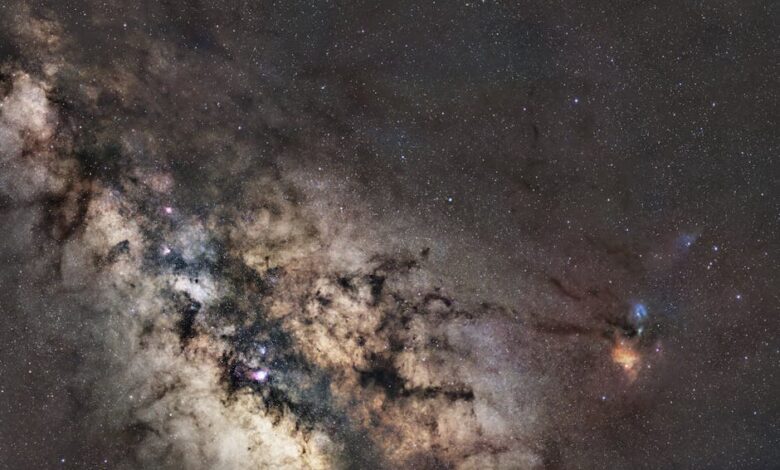Beyond Euclidean Limitations: Why Curvature Matters

In the vast and intricate landscape of deep learning, we’re constantly searching for better ways to understand and represent complex data. For a long time, the familiar “flat” world of Euclidean geometry has been our go-to. It’s great for many things, but what happens when the data isn’t flat? What if it’s inherently hierarchical, nested, or tree-like, mimicking structures found everywhere from social networks to biological classifications?
That’s where the captivating world of hyperbolic geometry steps in, offering a curved space where these complex relationships can be modeled with far greater fidelity. And among its fascinating forms, Lorentzian geometry is carving out a unique niche. Recent work, particularly the LHIER experiments, has shown incredible promise in leveraging Lorentzian geometry to significantly improve deep learning models. It’s not just a theoretical curiosity; it’s a practical leap forward for how our AI systems perceive and process information.
Beyond Euclidean Limitations: Why Curvature Matters
Imagine trying to map the intricate branches of a family tree onto a flat piece of paper. You’d quickly run into distortions, needing to stretch or compress connections to make everything fit. Euclidean space, with its uniform distances, faces similar struggles when dealing with data that has inherent hierarchies or power-law distributions. Concepts that are intuitively “far” from each other in a hierarchy might appear close in a Euclidean embedding, leading to less effective models.
Hyperbolic spaces, on the other hand, are designed for this kind of structure. They have a negative curvature that allows more “room” as you move away from a central point, naturally accommodating exponentially growing data points. This makes them exceptionally powerful for tasks like natural language processing, knowledge graphs, and, as we’re seeing, various computer vision problems. Lorentzian geometry, a specific flavor of hyperbolic space, brings its own advantages, often offering computational efficiencies while maintaining the geometric benefits.
Building Better Models: The LHIER Approach
The LHIER (Lorentzian HIER) project set out to extend existing hyperbolic models to this Lorentz framework, specifically targeting hierarchical metric learning. Think of metric learning as teaching a computer to understand how “similar” two things are. In this case, it’s about learning similarity within complex, structured datasets.
The researchers didn’t just port existing methods; they developed a suite of innovative components. A key player is the new Lorentzian AdamW optimizer, designed to navigate the unique geometry of the Lorentz manifold effectively. They also introduced a general optimization scheme, clever curvature learning techniques that let the model dynamically adjust its space, and a crucial max distance scaling to maintain numerical stability – a notoriously tricky aspect of hyperbolic models.
In experiments focusing on hierarchical metric learning across diverse datasets like CUB-200-2011 (birds!), Cars-196, Stanford Online Products, and In-shop Clothes Retrieval, the LHIER+ model consistently showed improved performance. While ResNet models saw significant gains, there were some interesting challenges with DeiT models at higher dimensionalities. This highlights a common theme in deep learning: even with groundbreaking new approaches, meticulous hyperparameter tuning (like for the tanh scaling factor) remains critical for unlocking full potential across all architectures.
Unlocking Efficiency and Accuracy: Lorentzian Advances in Classification
But the impact of Lorentzian geometry isn’t limited to metric learning. The LHIER team also explored its application to standard classification problems, using familiar benchmarks like CIFAR10, CIFAR100, and Mini-Imagenet, alongside ResNet-18 and ResNet-50 architectures. The goal was clear: could these geometric innovations boost traditional image classification?
The results were compelling. For ResNet-18, the new Lorentzian architectures performed better in almost all scenarios. Perhaps most notably, fully hyperbolic models saw a substantial 74% lift in accuracy compared to their Euclidean counterparts, even matching some hybrid encoders. A fascinating discovery was that the learned curvature of the encoder tended towards approximately -0.6, suggesting that a slightly “flatter” yet still hyperbolic manifold was optimal for these tasks. This offers valuable insight into how models adapt their internal geometry to best represent the data.
When scaled up to ResNet-50, the benefits became even more pronounced. The HECNN+ model consistently outperformed its Euclidean baseline across all datasets, including the notoriously challenging Tiny-Imagenet where other models often struggle. This success points to a more fluid integration of hyperbolic elements and sophisticated scaling techniques that effectively handle higher dimensional embeddings, proving the scalability and robustness of the Lorentzian approach.
Under the Hood: The Architectural Innovations
To truly understand the impact, the researchers conducted ablation studies, systematically removing components to see their individual contributions. Unsurprisingly, the best results were achieved when all the proposed architectural innovations were working in concert. It wasn’t just about adding hyperbolic layers; it was about the synergy of the specialized optimizer, curvature learning, and scaling operations.
One striking finding was the absolute necessity of the proposed optimizer schema for curvature learning. Without it, the model completely broke down due to numerical inaccuracies – a testament to the delicate balance required when optimizing on complex manifolds. An added bonus? Curvature learning also led to quicker convergence, with models reaching optimal performance in 130 epochs compared to 200 for static curve models. Time saved in training is always a win in deep learning!
Beyond accuracy, efficiency is paramount. The new efficient convolutional layers demonstrated significant improvements: roughly a 48% reduction in memory usage and a 66% reduction in runtime. This is a substantial win, especially for deploying deep learning models in real-world applications. However, the study also revealed a new bottleneck: the batch normalization operation. It accounted for a hefty 60% of runtime and 30% of memory, indicating that this area is ripe for further geometric-aware optimization.
The Road Ahead: Pushing the Boundaries of Hyperbolic AI
The LHIER experiments, led by Ahmad Bdeir and Niels Landwehr, paint a clear picture: Lorentzian geometry holds immense potential for advancing deep learning. The ability to achieve impressive results even with float16 precision, which is often unstable for hyperbolic models, speaks volumes about the robustness of their proposed components and schemas. It shows we’re moving past the “concept” phase and into practical, deployable solutions.
Yet, like any pioneering work, it also illuminates the path forward. There’s still much to explore, from investigating different embedding bounding techniques (similar to norm clipping in Euclidean space) to further optimizing those pesky batch normalization layers. And the challenge of handling dimensionality reduction in hyperbolic feedforward layers remains an active area of research, pushing for approaches that better conform to the underlying manifold mathematics.
A New Dimension for Deep Learning
What we’re witnessing is more than just an incremental improvement; it’s a fundamental shift in how we might design and train deep learning models. By embracing the elegant complexities of Lorentzian geometry, we’re equipping our AI with a richer, more nuanced understanding of the data it processes. These new optimizers, architectural components, and insights into curvature learning are not just academic curiosities; they are foundational elements that could redefine the capabilities of computer vision and beyond. The future of AI might just be beautifully curved, and Lorentzian geometry is certainly leading the way.





